
|
|
 |
| Home | Topics Research | Publications | Collaborations | Contact Us | People | Links |
Neutron
Tomography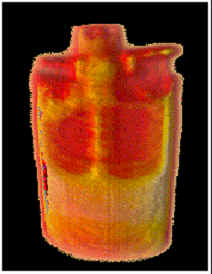 |
Neutron radiography is currently a well-known technique, which is employed for non-destructive testing in a number of industrial and environmental applications. Originally developed for reactor fuel examinations, it is now effective in detecting small amounts of corrosion and infiltrations of hydrogen or light materials within thick metallic structures due to the particular behaviour of total neutron cross sections. Nevertheless, improvements related to the development of tomographic systems, which allow far better imaging performances, have been achieved only in the last few years, as a consequence, primarily, of the production of large, charge coupled device (CCD) arrays. Nowadays, neutron computed tomography is the technique most suited for the study of the distribution of hydrogen within metallic matrices. In this field, a series of experimental tests were carried out employing a set of nickel samples containing a H20-D20 solution in known percentages. It was possible, therefore, to obtain a calibration curve for the total neutron cross section vs. gray level in the reconstructed image.
Evaluation of hydrogen content in metallic samples by neutron computed tomography
|
1 = Ni + H2O 2 = Ni + (25%)D20 + + (75%)H20 3 = Ni + (50%)D20 + + (50%)H20 4 = Ni + (75%)D20 + + (25%)H20 5 = Ni + D20 |
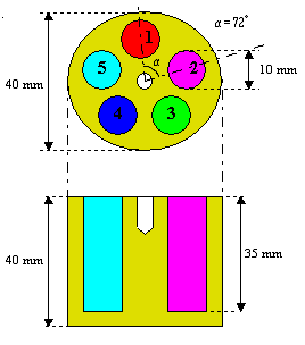 |
|
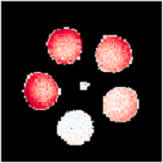 |
A preliminary study based on simulated projection data was conceived in order to theoretically demonstrate the feasibility of the experiment and to test the sensitivity of the reconstruction algorithms.
In Figures: Horizontal and vertical slices of the drilled aluminium cylinder. The content of each hole is reported in the (left) table.
The zones characterized by different hydrogen concentrations are clearly distinguishable.
The experimental results of this study demonstrate that NCT is a reliable technique for quantitative evaluations of hydrogen content in metallic samples. The wide dynamic range supplied by the cooled CCD camera allows to perform high quality tomographies. A good
linearity has been established between the grey level and the macroscopic total cross section in the range from 0.5 to 3.5 cm-l. Hence, this technique could be satisfatctorily employed for studies in the field of material science, for non destructive testing over metallic products and, more generally, for the imaging of light element distributions in bulk structures. Further improvements in image quality are mainly related to structural modifications in the neutron beam collimator
3D Neutron Tomography of a lighter
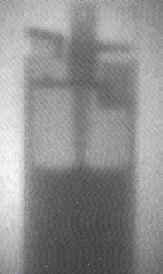

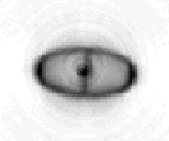
Webmaster: Rosa
Brancaccio